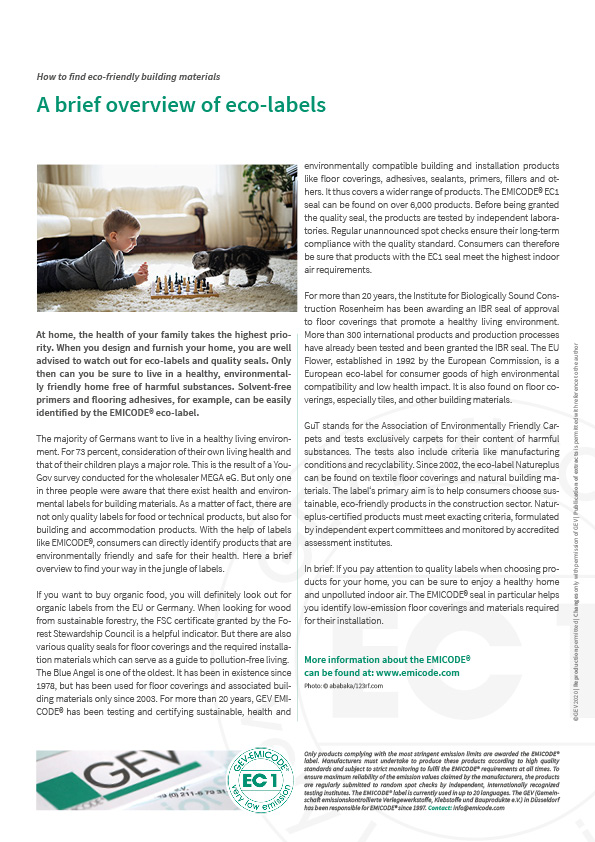A brief overview of eco-labels
How to find eco-friendly building materials
The majority of Germans want to live in a healthy living environment. For 73 percent, consideration of their own living health and that of their children plays a major role. This is the result of a YouGov survey conducted for the wholesaler MEGA eG. But only one in three people were aware that there exist health and environmental labels for building materials. As a matter of fact, there are not only quality labels for food or technical products, but also for building and accommodation products. With the help of labels like EMICODE®, consumers can directly identify products that are environmentally friendly and safe for their health. Here a brief overview to find your way in the jungle of labels.
If you want to buy organic food, you will definitely look out for organic labels from the EU or Germany. When looking for wood from sustainable forestry, the FSC certificate granted by the Forest Stewardship Council is a helpful indicator. But there are also various quality seals for floor coverings and the required installation materials which can serve as a guide to pollution-free living.
The Blue Angel is one of the oldest. It has been in existence since 1978, but has been used for floor coverings and associated building materials only since 2003. For more than 20 years, GEV EMICODE® has been testing and certifying sustainable, health and environmentally compatible building and installation products like floor coverings, adhesives, sealants, primers, fillers and others. It thus covers a wider range of products. The EMICODE® EC1 seal can be found on over 6,000 products. Before being granted the quality seal, the products are tested by independent laboratories. Regular unannounced spot checks ensure their long-term compliance with the quality standard. Consumers can therefore be sure that products with the EC1 seal meet the highest indoor air requirements.
For more than 20 years, the Institute for Biologically Sound Construction Rosenheim has been awarding an IBR seal of approval to floor coverings that promote a healthy living environment. More than 300 international products and production processes have already been tested and been granted the IBR seal. The EU Flower, established in 1992 by the European Commission, is a European eco-label for consumer goods of high environmental compatibility and low health impact. It is also found on floor coverings, especially tiles, and other building materials.
GuT stands for the Association of Environmentally Friendly Carpets and tests exclusively carpets for their content of harmful substances. The tests also include criteria like manufacturing conditions and recyclability. Since 2002, the eco-label Natureplus can be found on textile floor coverings and natural building materials. The label’s primary aim is to help consumers choose sustainable, eco-friendly products in the construction sector. Natureplus-certified products must meet exacting criteria, formulated by independent expert committees and monitored by accredited assessment institutes.
In brief: If you pay attention to quality labels when choosing products for your home, you can be sure to enjoy a healthy home and unpolluted indoor air. The EMICODE® seal in particular helps you identify low-emission floor coverings and materials required for their installation.

Photo: ©@ababaka/123rf.com
At home, the health of your family takes the highest priority. When you design and furnish your home, you are well advised to watch out for eco-labels and quality seals. Only then can you be sure to live in a healthy, environmentally friendly home free of harmful substances. Solvent-free primers and flooring adhesives, for example, can be easily identified by the EMICODE® eco-label.

Do You Have Questions?
If you have questions about specific topics or if you would like to contact us for any other reason, feel free to contact us by phone, fax or e-mail.
Phone: +49 211 / 67931-20
Fax: +49 211 / 67931-33
info@emicode.com
Share article on Social Media:
